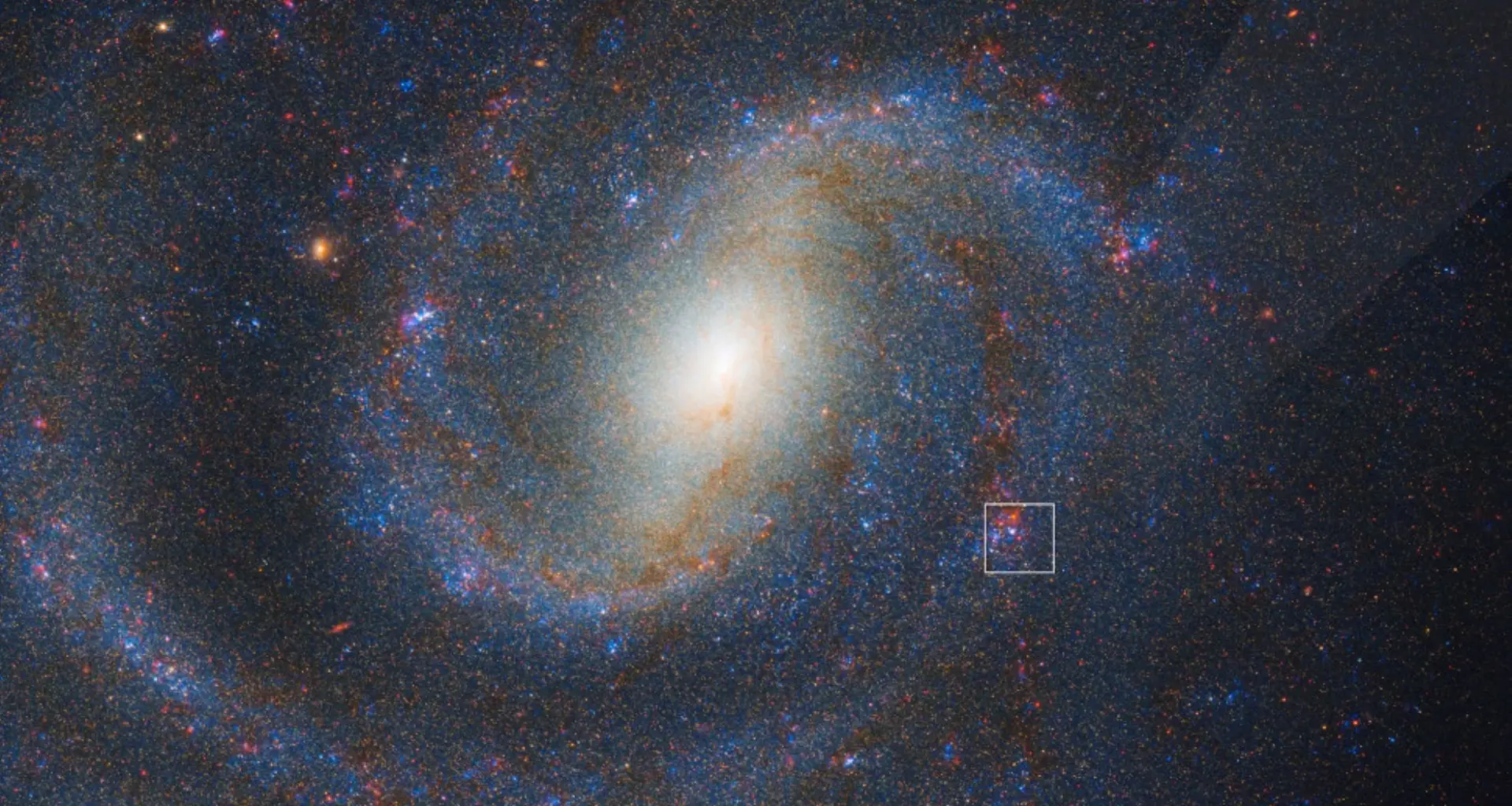In a cosmic detective story decades in the making, astronomers have finally caught a red supergiant in the act of dying, and it wasn’t what they expected. Using NASA’s James Webb Space Telescope (JWST), a team led by Northwestern University has captured the most detailed view yet of a doomed star just before it exploded, revealing a hidden world of dust, mystery, and long-awaited answers.
The discovery, published October 8 in The Astrophysical Journal Letters, marks JWST’s first-ever detection of a supernova progenitor. It also sheds light on a long-standing puzzle: why do massive red supergiants, predicted to be the most common stars to explode, seem to vanish before their final act?
“For multiple decades, we have been trying to determine exactly what the explosions of red supergiant stars look like,” said Charlie Kilpatrick, lead author of the study and research assistant professor at Northwestern’s Center for Interdisciplinary Exploration and Research in Astrophysics. “Only now, with JWST, do we finally have the quality of data and infrared observations that allow us to say precisely the exact type of red supergiant that exploded and what its immediate environment looked like.”
The star in question, now known as SN2025pht, was first spotted on June 29, 2025, by the All-Sky Automated Survey of Supernovae. Its light had traveled 40 million years from the nearby galaxy NGC 1637 before reaching Earth. But it wasn’t just the explosion that caught astronomers’ attention: it was the star’s hidden identity.
By comparing archival Hubble images with fresh JWST data, Kilpatrick and his team pinpointed the progenitor star. What they found was astonishing: a red supergiant so bright it outshone our sun by 100,000 times, yet so cloaked in dust it appeared more than 100 times dimmer in visible light. The dust blocked shorter, bluer wavelengths, making the star appear intensely red.
“It’s the reddest, dustiest red supergiant that we’ve seen explode as a supernova,” said Aswin Suresh, a graduate student at Northwestern and key coauthor on the paper.
Red supergiants are among the largest stars in the universe, known for their bloated atmospheres and fiery deaths. When their cores collapse, they erupt as Type II supernovae, leaving behind neutron stars or black holes. Betelgeuse, the reddish shoulder of Orion, is one of the most famous examples.
But SN2025pht stood out even among its peers.
“SN2025pht is surprising because it appeared much redder than almost any other red supergiant we’ve seen explode as a supernova,” Kilpatrick added. “That tells us that previous explosions might have been much more luminous than we thought because we didn’t have the same quality of infrared data that JWST can now provide.”
The thick veil of dust surrounding SN2025pht may finally explain why astronomers have struggled to find red supergiant progenitors. These stars should be easy to spot; they’re massive, luminous, and theoretically abundant. Yet they’ve remained elusive.
“I’ve been arguing in favor of that interpretation, but even I didn’t expect to see such an extreme example as SN2025pht,” Kilpatrick said. “It would explain why these more massive supergiants are missing because they tend to be dustier.”
And the surprises didn’t stop there. While red supergiants typically produce oxygen-rich, silicate dust, SN2025pht’s dust was rich in carbon. This suggests that powerful convection in the star’s final years dredged up carbon from deep within, changing the dust’s chemistry.
“The infrared wavelengths of our observations overlap with an important silicate dust feature that’s characteristic of some red supergiant spectra,” Kilpatrick said. “This tells us that the wind was very rich in carbon and less rich in oxygen, which was also somewhat surprising for a red supergiant of this mass.”
This landmark study opens a new chapter in the study of stellar death. With JWST’s ability to see in mid-infrared wavelengths, astronomers can now peer through the dust and uncover stars previously hidden from view. It’s a leap forward in matching theory with observation, and in understanding how the universe recycles its most massive stars.
The team is already looking ahead. They’re searching for other red supergiants on the brink of explosion, hoping to catch more stars in their final moments. NASA’s upcoming Nancy Grace Roman Space Telescope may play a crucial role, thanks to its powerful infrared capabilities and wide-field view.
“With the launch of JWST and the upcoming Roman launch, this is an exciting time to study massive stars and supernova progenitors,” Kilpatrick said. “The quality of data and new findings we will make will exceed anything observed in the past 30 years.”
In the end, SN2025pht wasn’t just a supernova; it was a revelation. A star that had lived in obscurity, cloaked in cosmic dust, finally revealed its secrets thanks to the sharp eyes of JWST and the persistence of scientists who refused to stop looking.
It’s a reminder that even in the vastness of space, the universe still holds surprises. And with new tools and fresh eyes, we’re finally beginning to see the stars as they truly are: flawed, fiery, and unforgettable.
Journal Reference:
Charles D. Kilpatrick, Aswin Suresh, Kyle W. Davis et al. The Type II SN 2025pht in NGC 1637: A Red Supergiant with Carbon-rich Circumstellar Dust as the First JWST Detection of a Supernova Progenitor Star. The Astrophysical Journal Letters. DOI 10.3847/2041-8213/ae04de

